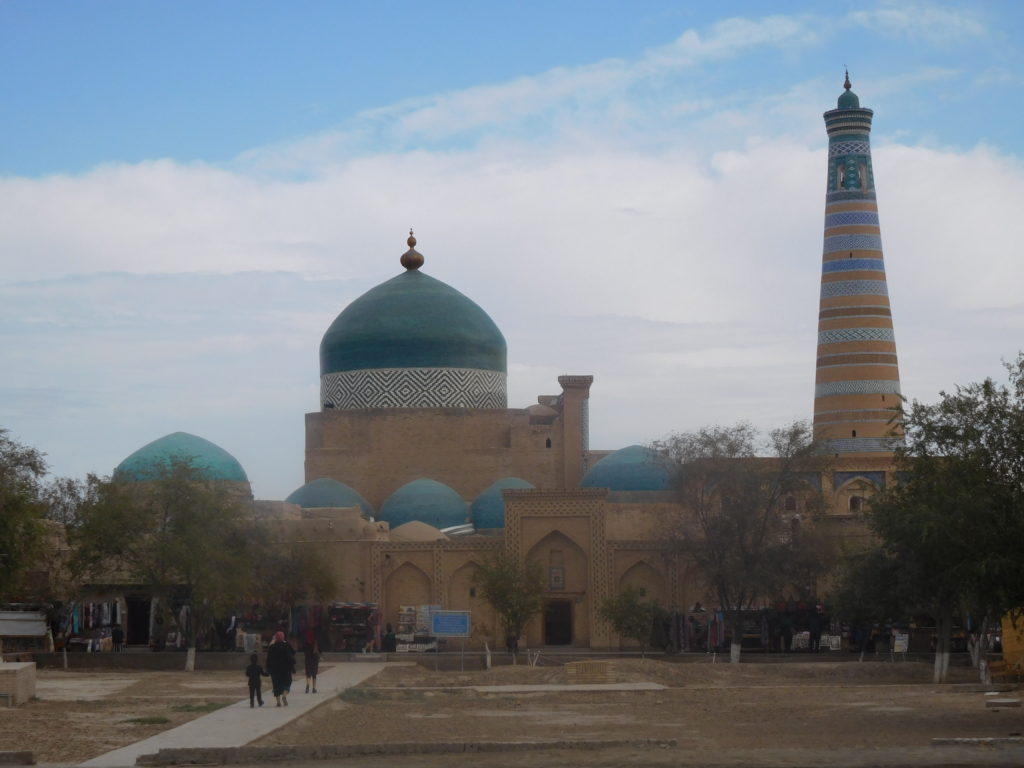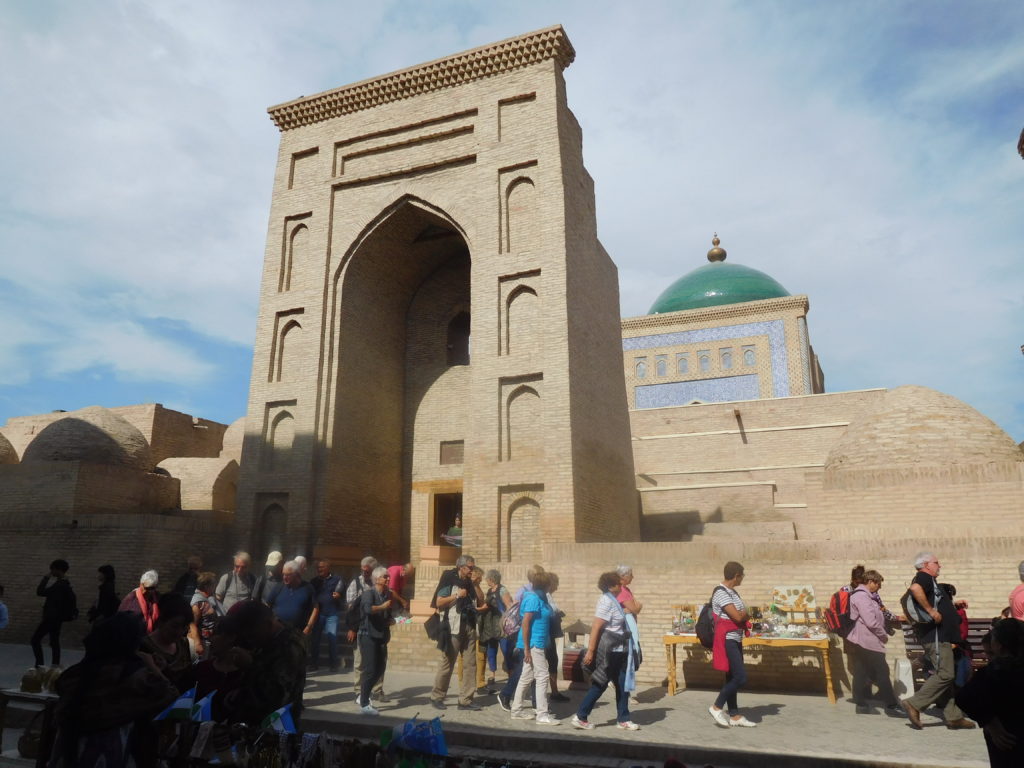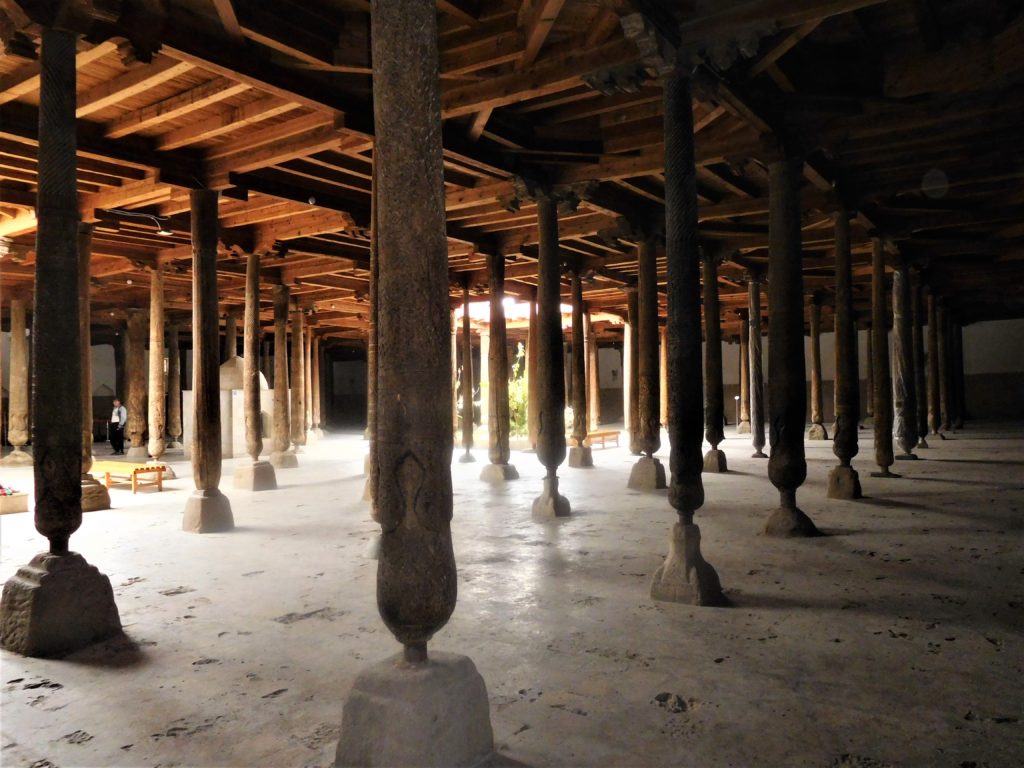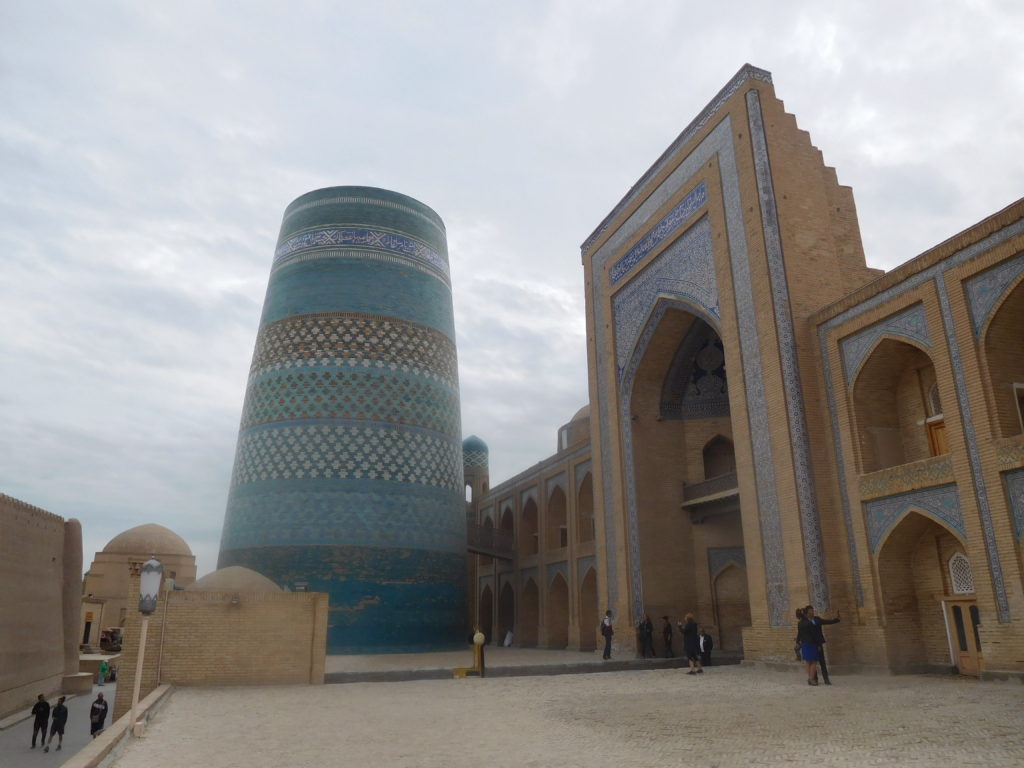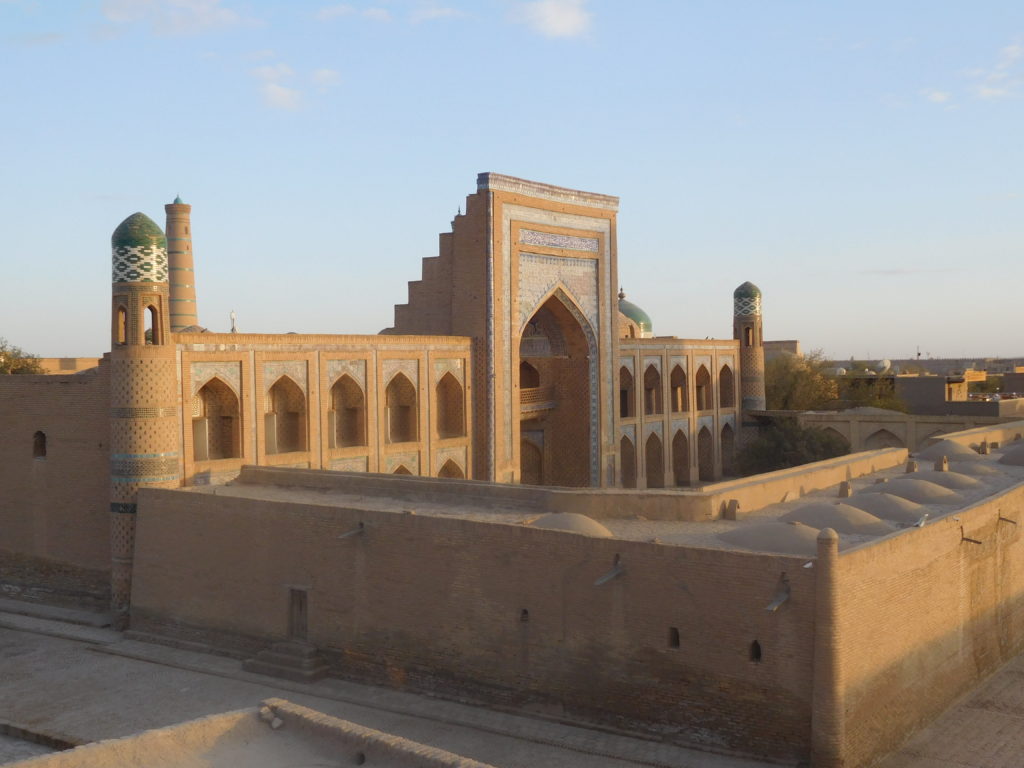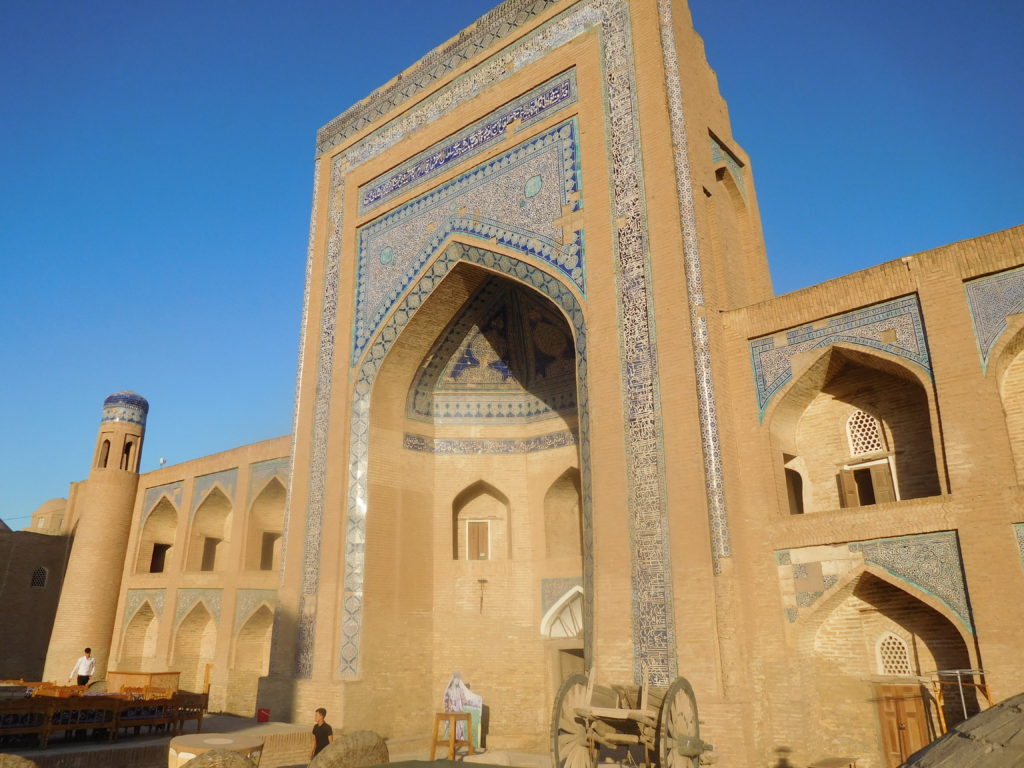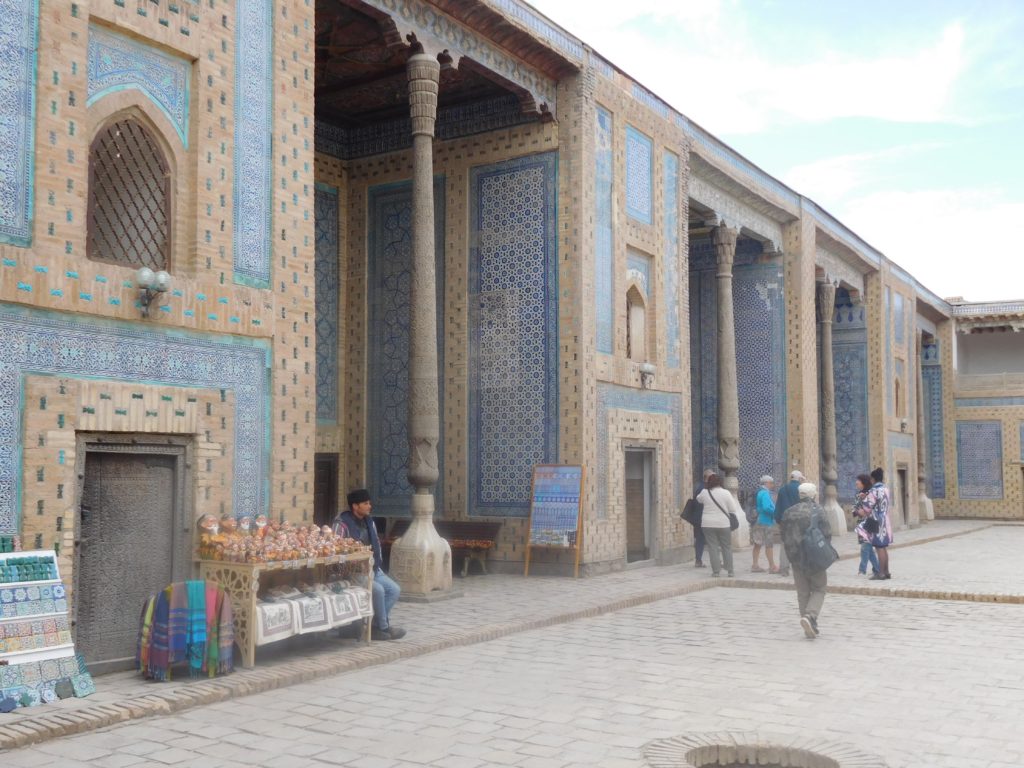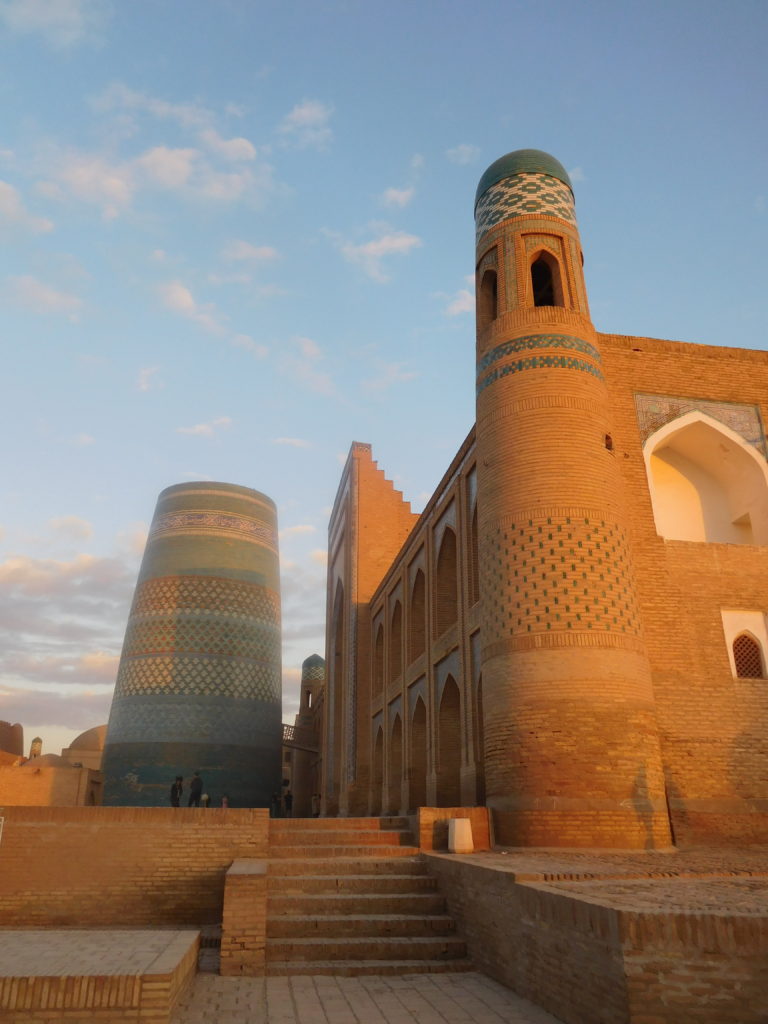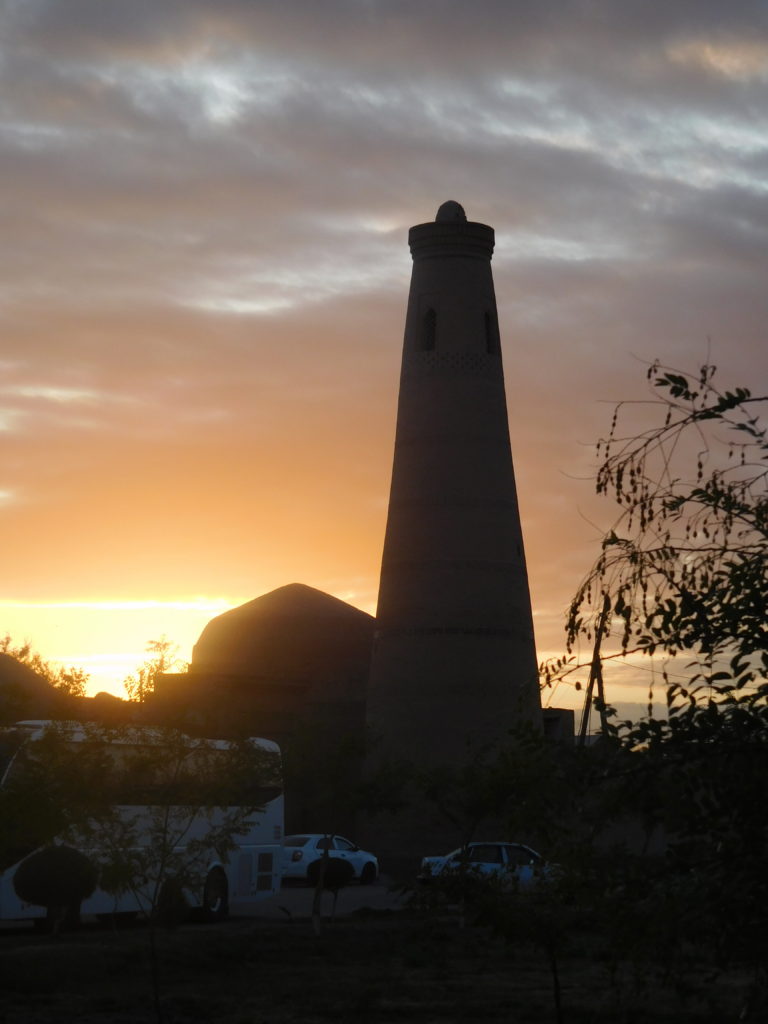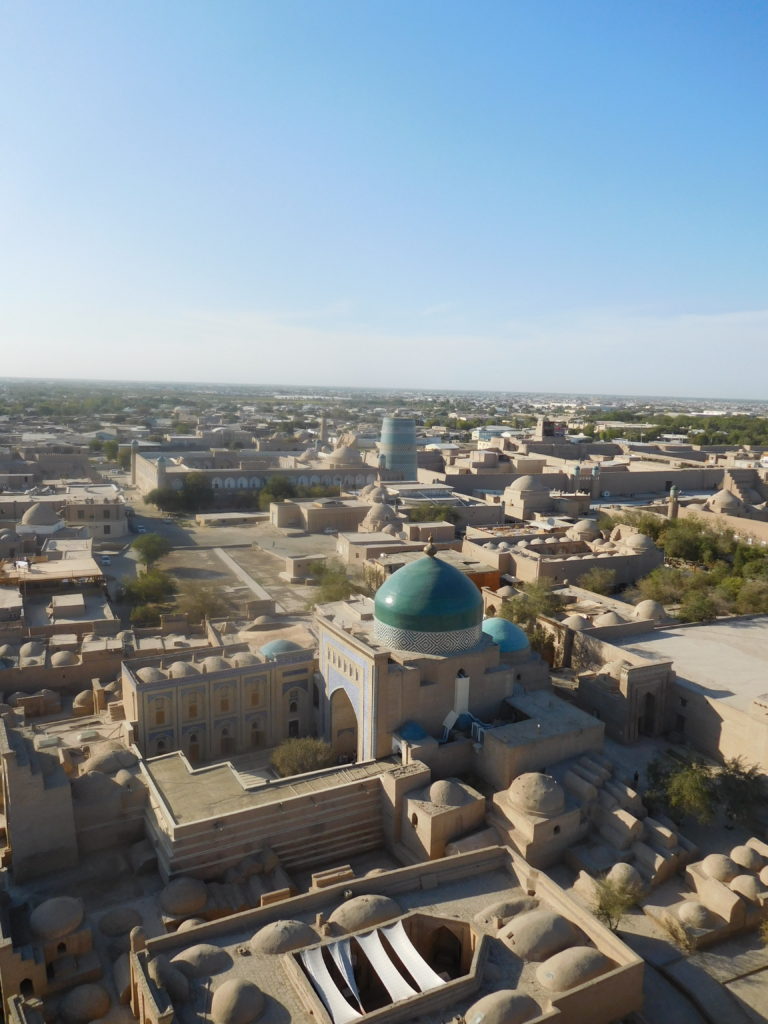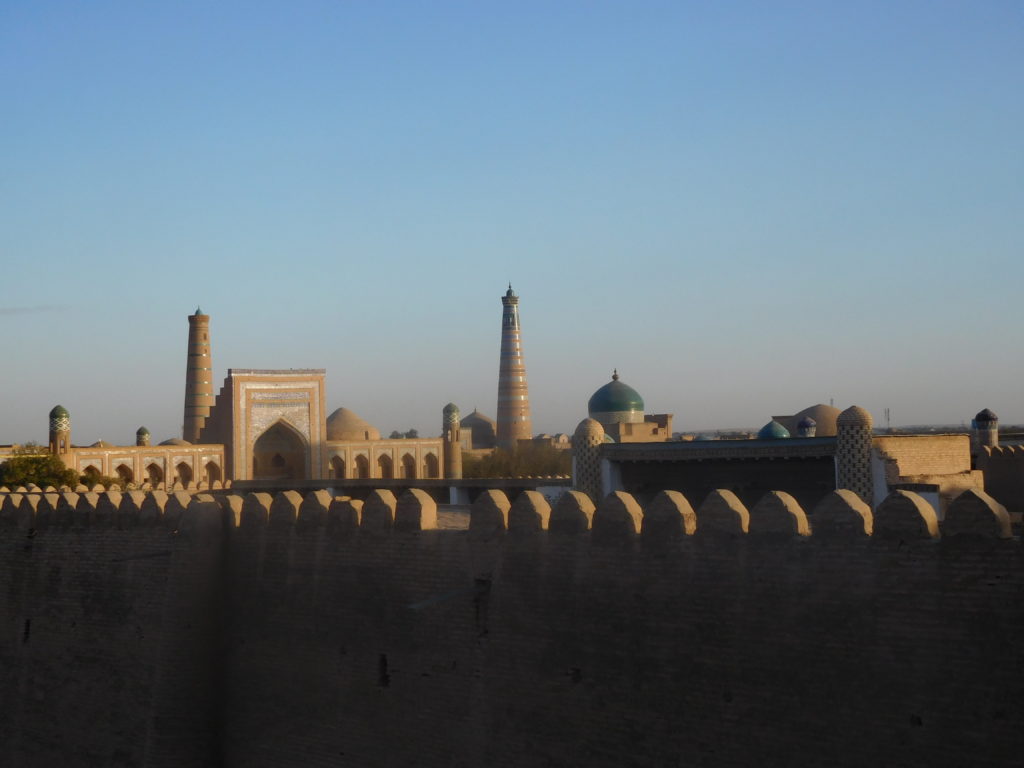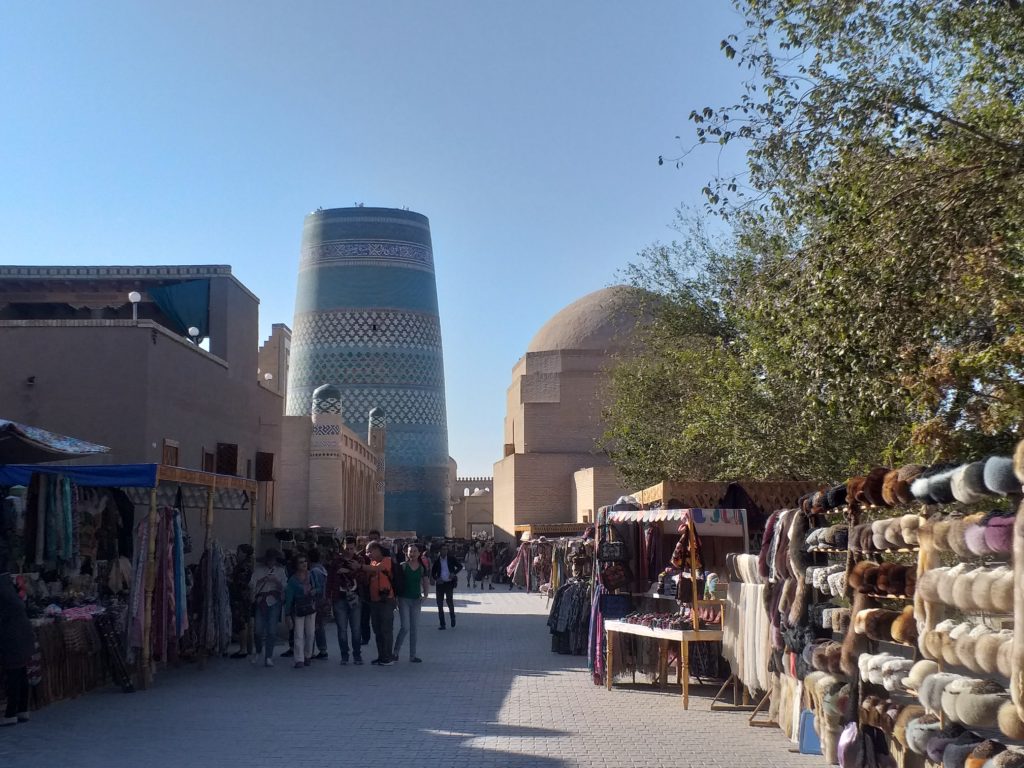
Khiva: the main pedestrian precinct
You can’t get to Khiva by train. The nearest railway station is Urgench, thirty kilometres from Khiva. You can travel the last leg of the journey by bus (UZS 3,000) or by trolleybus (UZS 1,500). In both cases, the journey takes just over an hour. In Urgench, the bus leaves from the bazaar (another bus will take you there from the railway station). In Khiva, the trolleybus leaves from the terminus located outside the north-eastern corner of the city walls, whereas the bus terminal is at the bazaar outside the city centre. More about the journey to Khiva in the post: Uzbeks, Tajiks: Brief Encounters.
The history of Khiva, like that of Samarkand and Bukhara, stretches back over 2,500 years. However, for centuries Khiva was just one of many towns in the Khwarazmian Empire. It wasn’t until the 16th century that Khiva rose in status, following the invasion of the Uzbek tribes. In the middle of the following century, the city became the capital of the khanate. Itchan Kala, the old town in Khiva is surrounded by walls and covers an area of 26 hectares. The accumulation of monuments on this relatively small area is breathtaking; allegedly there are as many as 60 sights there! Although the old town is still inhabited – you can meet residents and see children playing in the yards – it is a kind of an open-air museum. In order to enter through one of the gates and to have an opportunity to admire the monuments from outside, you have to pay UZS 50,000 (prices from October 2019). The town is terribly commercialised, with stalls offering souvenirs everywhere, as well as plenty of cafes and restaurants, quite expensive compared with other cities in Uzbekistan. The monuments have been renovated and the main pedestrian precinct, joining the eastern and western gate, has been spruced up. A combined ticket of UZS 100,000 enables you to visit most of the sights, with a VIP option for UZS 150,000 which includes the Islam Khodja minaret, but still does not include all the monuments. By way of example, the Mausoleum of Pahlavan Mahmud, one of the most important sights, is paid extra (UZS 10,000). The good news is that combined tickets are valid for 48 hours.
- Mausoleum of Pahlavan Mahmud and Islam Khodja Minaret/Mauzoleum Mahmuda Pahlawana i minaret Isłam Hodża
- Mausoleum of Pahlavan Mahmud/Mauzoleum Mahmuda Pahlawana
- Islam Khodja Madrasah/Medresa Isłam Hodża
- Friday Mosque/Meczet piątkowy
- Kalta Minor Minaret and Muhammad Amin Khan Madrasah /Minaret Kalta Minor i medresa Muhammada Amina-Chana
- Allakuli Khan Madrasah/Medresa Chana Allah Kuli Bahadura
- Allakuli Khan Madrasah/Medresa Chana Allah Kuli Bahadura
- Tash-Khovli Palace/Pałac Tasz Chowli
Apart from the Mausoleum of Pahlavan Mahmud, the most interesting sights are the Islam Khodja Madrasah, the Friday Mosque, the Allakuli Khan Madrasah and the Tash-Khovli Palace. The city walls are definitely worth climbing, preferably shortly before sunset (the entrance is by the northern gate), as well as the Islam Khodja Minaret (although it’s not very high, I wouldn’t recommend it to elderly people because of the very steep and narrow stairs), both giving picturesque views over the town. Another place with a nice view of Khiva is the Terasse Cafe (in fact it’s a restaurant), beautifully located on the roof of a house next to the Kunya-Ark citadel. However, if you wish to eat there in high season, you should really book a table in advance.
Given the small size of the town and the short distances between the monuments, as well as their small size, one day or even just a few hours are enough to visit Khiva. Probably the tone of this post slightly reveals my disappointment with the town. In fact, I must admit to being disappointed with Khiva, which in my view is no match for Samarkand and Bukhara. Having said that, I talked with tourists who thought the opposite… They were delighted with Khiva and believed that the other sights in Uzbekistan were unable to rival this charming town.
- Islam Khodja Minaret/Minaret Isłam Hodża
- Islam Khodja Madrasah and Minaret/Medresa i minaret Isłam Hodża
- Kalta Minor Minaret and Muhammad Amin Khan Madrasah/Minaret Kalta Minor i medresa Muhammada Amina-Chana
- A mosque outside the city walls/Meczet za murami
From Khiva you can travel farther to the west to Nukus, in order to visit the Karakalpakstan State Museum of Art established by Igor Savitsky, with its highly appreciated collection of Russian avant-garde painting. You can also visit the cemetery of ships in Mo‘ynoq (Muynak), which used to lie on the shore of the Aral Sea – probably one of the most moving examples of environmental devastation on Earth. Both Urgench and Nukus offer a flight back to Tashkent, but I opted to return from Urgench to Tashkent by train. More about the journey to Taskent: Uzbeks, Tajiks: Brief Encounters.
- Khiva. View from the Islam Khodja Minaret/Chiwa. Widok z minaretu Islam Hodża.
- Khiva. View from the city walls/Chiwa. Widok z murów obronnych.

